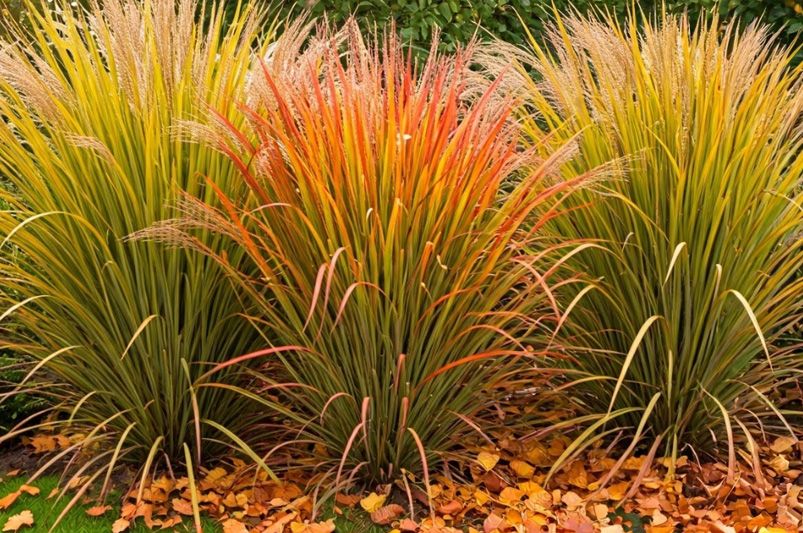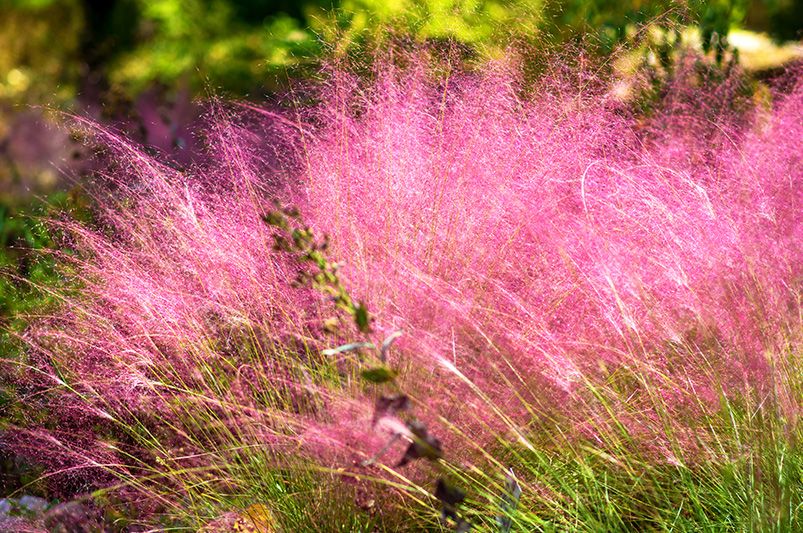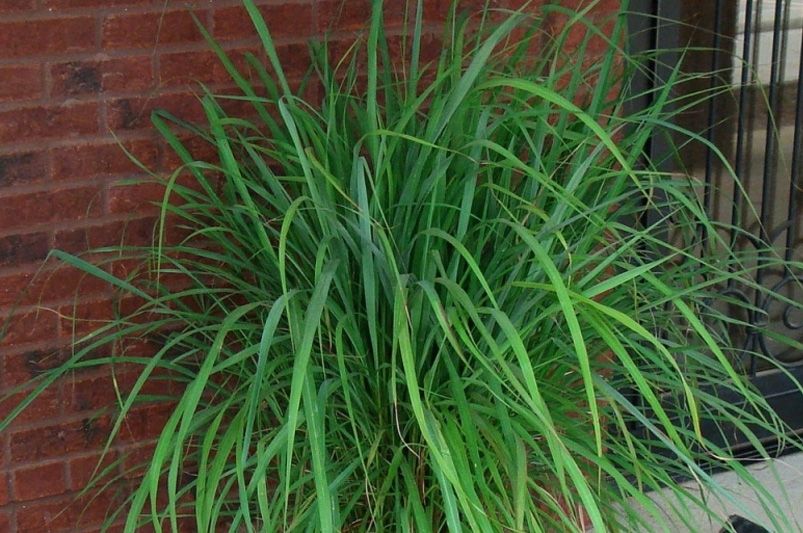
Essential Fall Care Tips for Ornamental Grasses
Published: 31/10/2024 | Updated: 31/10/2024
Key Highlights
- Determine if your ornamental grass is warm-season or cool-season for proper fall care.
- Fall is a great time to leave most grasses standing for winter interest and wildlife habitat.
- Consider cutting back diseased grasses to prevent the spread of infections.
- Divide overgrown warm-season grasses in spring or early summer, and cool-season grasses in early spring or fall.
- Mulch around the base of your grasses in late fall to insulate roots and provide nutrients.
Introduction
Ornamental grasses add special beauty and texture to gardens. Taking care of them in the fall is important for their health. They are easy to care for, but it is essential to know the difference between cool-season and warm-season grasses. This guide gives you important tips on getting your ornamental grasses ready for the colder months.


Preparing Your Ornamental Grasses for Fall
As summer ends, ornamental grasses change to their autumn colors. They display bright hues and unique textures. Now is the time to change how you care for them. Doing this will help your grasses do well in fall and winter. First, know what type of grass you have. Then, use care methods that fit their needs. This way, your grasses can survive winter and come back better in spring.
Identifying Your Grass Type: Warm-Season vs. Cool-Season
Before you start with fall care, it’s important to know if your ornamental grass is warm-season or cool-season. This difference affects how they grow and what care they need. Warm-season grasses, like fountain grass, grow the most in summer. They show beautiful plumes and seed heads as it gets cooler. Cool-season grasses do well in chilly weather and grow in spring and fall.
To find out the type of grass you have, just watch how it grows. If it does well in warm months and rests when it gets cold, it is probably a warm-season type. If it mainly grows in spring and fall, then it is a cool-season grass.
After figuring out the type of grass you have, you can adjust your fall care routine. This way, you provide the exact care it needs to grow well.
The Right Time to Start Fall Preparation
Timing is key when you prepare your ornamental grasses for fall. If you wait too long to do important tasks, your grasses may suffer damage during winter. This damage can affect how well they grow in the next year. Starting your fall care routine in late summer or early fall is just right. It gives your grasses enough time to adjust to the weather changes before the first frost comes.
This time is perfect for doing important tasks. You should change your watering schedule, add needed nutrients, and take protective steps like mulching. These actions help keep your ornamental grasses healthy and strong over time.
Essential Maintenance Tips for Healthy Growth
To keep your ornamental grasses healthy, you need to focus on their basic needs. This includes giving them enough water and using soil that has the right nutrients. These simple steps can greatly help your grasses resist pests, handle changing temperatures, and stay vibrant.
When you learn about these basic care needs and stick to them, you give your ornamental grasses the best chance to thrive.
Watering Needs During the Cooler Months
Adjusting your watering schedule is very important as it gets cooler. In summer, you water often. But in cooler temperatures, you should water less to stop root rot. Ornamental grasses can handle some drought, but they still need regular moisture, especially when they are new.
Check the soil to see if it is moist. Water deeply but not too often. A good idea is to let the topsoil dry a bit before you water again. This helps the roots grow deeper, making the grass stronger for cold weather and dry times in winter.
Keep in mind that too much water can harm root systems, especially in winter. Finding the right balance in watering is key to keeping your plants healthy.
The Importance of Soil Health and Mulching
Maintaining healthy soil is important for your ornamental grasses. Like all plants, grasses do best in soil full of helpful microorganisms and rich in organic matter. These factors help with drainage, air flow, and nutrients, which help plants handle stress from the environment.
Mulching is key for keeping soil healthy. It acts like a protective layer over the roots. Here are some benefits of mulching:
- Insulation: Mulch keeps the soil temperature steady, helping protect roots from severe cold and frost in winter.
- Moisture Retention: A layer of mulch slows down water loss, keeping the soil wet and reducing how much you need to water.
- Weed Suppression: Mulch stops weeds from growing, cutting down the competition for water and nutrients.
- Soil Enrichment: As mulch breaks down, it adds valuable organic matter to the soil. This improves its structure and fertility.
Putting mulch around your ornamental grasses in late fall gives them important protection from rough winter weather.
Pruning and Trimming Techniques
Pruning and trimming are important for taking care of ornamental grass. They help improve how the grass looks, its health, and its strength. The timing and method of pruning can change based on the type of grass, but the main aim is to get rid of dead or too much foliage. This helps new growth and keeps the plant at the shape and size you want.
Knowing the right techniques helps you make your grass look good and also supports its health and life.
How to Properly Cut Back Ornamental Grasses
Knowing how to cut back ornamental grasses is important for keeping them healthy and encouraging new growth. The general rule is to prune warm-season grasses in late winter or early spring, just before they start to grow again. For cool-season grasses, wait until late winter when the snow has melted.
When you prune, gather the foliage together. Use sharp pruning shears or hedge trimmers to cut the whole clump back to about 6 inches from the ground. This helps sunlight reach the crown of the plant and encourages new growth.
For larger grasses, you may need different tools, like an electric hedge trimmer or a saw, to make cutting easier. Don't forget, wearing gloves is important when handling ornamental grasses because their blades can be sharp.
Avoiding Common Mistakes in Pruning
Pruning is very important for the health of ornamental grass. However, there are some common mistakes you should avoid to keep your plants safe.
One mistake is pruning too early in the fall. This can make plants more likely to suffer in winter. If you cut too soon, you may remove their natural insulation. It can also lead to new growth that may get damaged by frost.
Another mistake is cutting back the foliage too much. It's good to leave a few inches of old growth. This helps protect the crown of the plant during the harsh winter. Also, be sure to use sharp tools. Dull tools can make rough cuts, and this can leave your plants open to disease.
Finally, don't forget to remove any dead material around the base of the plant. This can attract pests and diseases. By taking care to use proper pruning techniques, you can help your ornamental grasses thrive for many years.
Conclusion
In conclusion, caring for your ornamental grasses in the fall is very important. This helps keep them healthy and beautiful. First, identify the type of grass you have. Start getting ready for fall at the right time. Follow key maintenance tips like watering properly and keeping the soil healthy. Pruning and trimming are important to shape your grasses for the next season. Don't forget to fertilize when it's best. Protect your plants from frost and manage pests well. Share these fall care tips on social media. This way, you can help others care for their ornamental grasses, too.
Frequently Asked Questions
When is the best time to fertilize ornamental grasses?
The best time to fertilize most ornamental grasses is early spring. This is when the growing season starts. Taller grasses or evergreen grasses may need fertilizer again in early summer.
Can ornamental grasses survive the first frost?
Yes, many well-known ornamental grasses can handle the cold. They can stand the first frost. Evergreen and cool-season grasses usually keep their green leaves all winter.
How do you manage pests in ornamental grasses during fall?
In the fall, pests are usually less of a problem. But you can still avoid issues by taking proper care of your plants. This means not overwatering and making sure there is good air circulation. Beneficial insects and natural predators also help keep pests under control.
Need Assistance for a Complete Landscape Makeover?
Shrubhub’s landscape design packages can significantly transform the lives of homeowners by delivering customized, professional landscaping plans tailored to their unique space and personal style. With the ease of online collaboration, you are guided step-by-step through a design process that fundamentally reshapes your outdoor environment. The result is an aesthetically pleasing and functional outdoor living area that maximizes the potential of your property.





